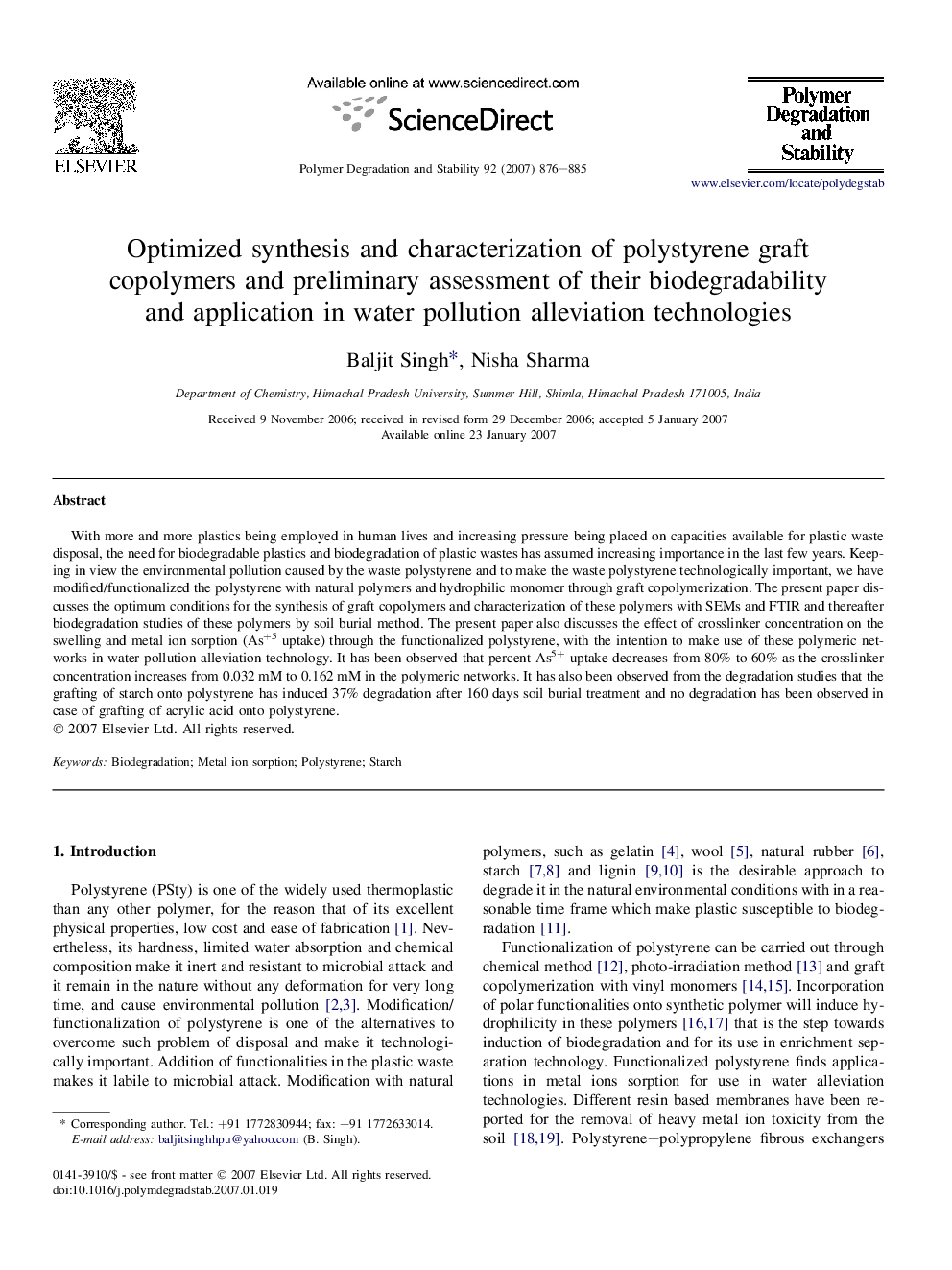| Article ID | Journal | Published Year | Pages | File Type |
|---|---|---|---|---|
| 5204352 | Polymer Degradation and Stability | 2007 | 10 Pages |
With more and more plastics being employed in human lives and increasing pressure being placed on capacities available for plastic waste disposal, the need for biodegradable plastics and biodegradation of plastic wastes has assumed increasing importance in the last few years. Keeping in view the environmental pollution caused by the waste polystyrene and to make the waste polystyrene technologically important, we have modified/functionalized the polystyrene with natural polymers and hydrophilic monomer through graft copolymerization. The present paper discusses the optimum conditions for the synthesis of graft copolymers and characterization of these polymers with SEMs and FTIR and thereafter biodegradation studies of these polymers by soil burial method. The present paper also discusses the effect of crosslinker concentration on the swelling and metal ion sorption (As+5 uptake) through the functionalized polystyrene, with the intention to make use of these polymeric networks in water pollution alleviation technology. It has been observed that percent As5+ uptake decreases from 80% to 60% as the crosslinker concentration increases from 0.032Â mM to 0.162Â mM in the polymeric networks. It has also been observed from the degradation studies that the grafting of starch onto polystyrene has induced 37% degradation after 160 days soil burial treatment and no degradation has been observed in case of grafting of acrylic acid onto polystyrene.
